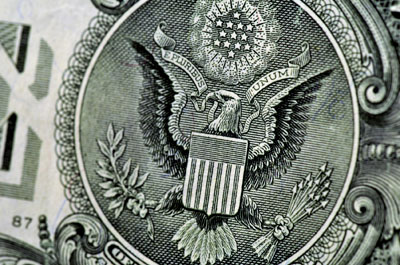
Commentary: Federal Debt and Its Implications for Economic Stability
8/17/2010
 When the Congressional Budget Office (CBO) produced a brief in late July on the nation’s debt levels and the risk they present to the economy, those pushing for immediate deficit reduction jumped on the report as evidence that the U.S. is about to go over a financial cliff. Upon closer inspection, though, the greatest threat facing the country is still the Great Recession and the lingering effects thereof.
When the Congressional Budget Office (CBO) produced a brief in late July on the nation’s debt levels and the risk they present to the economy, those pushing for immediate deficit reduction jumped on the report as evidence that the U.S. is about to go over a financial cliff. Upon closer inspection, though, the greatest threat facing the country is still the Great Recession and the lingering effects thereof.
The CBO brief, "Federal Debt and the Risk of a Fiscal Crisis," did not reveal anything new. For quite some time, economists have known that "further increases in federal debt ... almost certainly lie ahead," and that unless policymakers change its trajectory, "growing budget deficits will cause debt to rise to unsupportable levels." These high levels of debt would predictably result in severe economic consequences.
Along with the "crowding out" of investment and legislators' limited ability to react to economic emergencies, high levels of debt "would also increase the probability of a sudden fiscal crisis." CBO characterizes the crisis as an event "during which investors would lose confidence in the government's ability to manage its budget, and the government would thereby lose its ability to borrow at affordable rates."
The problem is that there is no consensus on what level of debt might trigger a fiscal crisis. CBO projects that debt held by the public will stand at 62 percent of gross domestic product (GDP) by the end of FY 2010. Under its “alternative fiscal scenario,” which takes into account likely future legislative and economic events, debt held by the public will increase to 90 percent by 2020, 110 percent by 2025, and 180 percent in 2035.
With implications of serious consequences, these numbers seem imminently threatening, especially when CBO notes, "In only one other period in U.S. history – during and shortly after World War II – has [federal debt held by the public as a percentage of GDP] exceeded 50 percent." Given the rarity of such a high debt ratio, one might be tempted to conclude that a fiscal crisis could be just around the corner.
A little context helps to mitigate the fear. During World War II, debt held by the public spiked at roughly 108 percent of GDP before falling relatively quickly, and then finally dipping back below 50 percent in the late 1950s. While it is difficult to make direct comparisons based simply on debt numbers of the past, with the return of a healthy economy, it would be hard to assume that projected debt levels over the next decade and a half necessarily foretell of doom.
Similarly, while it is true that fiscal crises can occur abruptly if investors quickly lose confidence in a country, as federal fiscal expert Stan Collender observes, "[T]here is little or no concern on Wall Street about the government’s borrowing, either short- or long-term." In fact, as Collender points out, the bond market, which lawmakers have traditionally looked to for insights on the federal budget, "is exhibiting no worries about the deficit or federal borrowing at all ... [and is] indicating that Washington should do more to stimulate the economy."
That is not to argue that Congress or the Obama administration does not need to do anything about projected debt levels; indeed, they do. Rather, it is to contend that fears about further spending in the near term based on future projected debt levels are unwarranted. As noted economist Nouriel Roubini recently remarked, the "[r]isk of a double dip recession in advanced economies ... has now risen to 40 [percent]." Without further stimulus help from the federal government, including further deficit spending, the likelihood of such an event will almost certainly increase.
The economic consequences associated with high debt levels are serious. However, the long-term structural gap between certain entitlement program revenues and spending commitments, which is what makes up the high projections, will only be worse if the economy does not recover from the current downturn because the government put too much emphasis on erasing near-term deficits – those caused by falling tax revenues and increased spending as a result of the economic downturn and transitory congressional actions like the Recovery Act. Without a solid recovery in the near term, lawmakers will have a more difficult time focusing on the longer-term implications of the structural debt without conflating the two.


